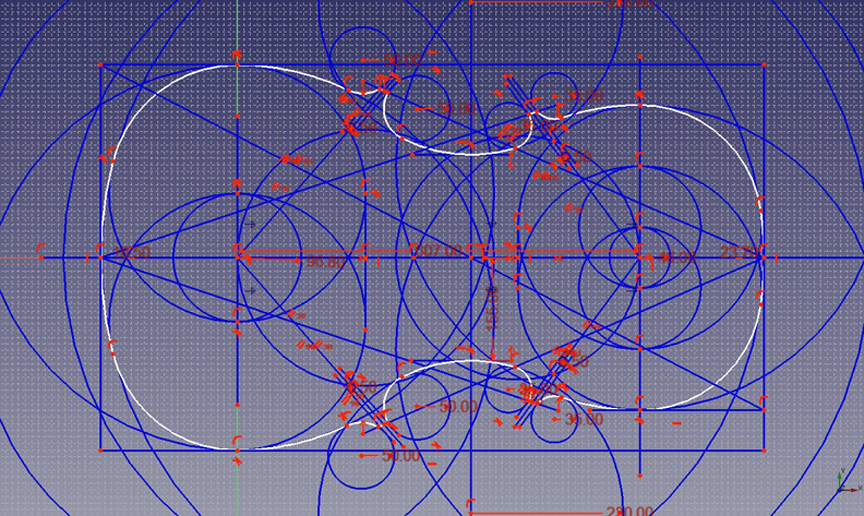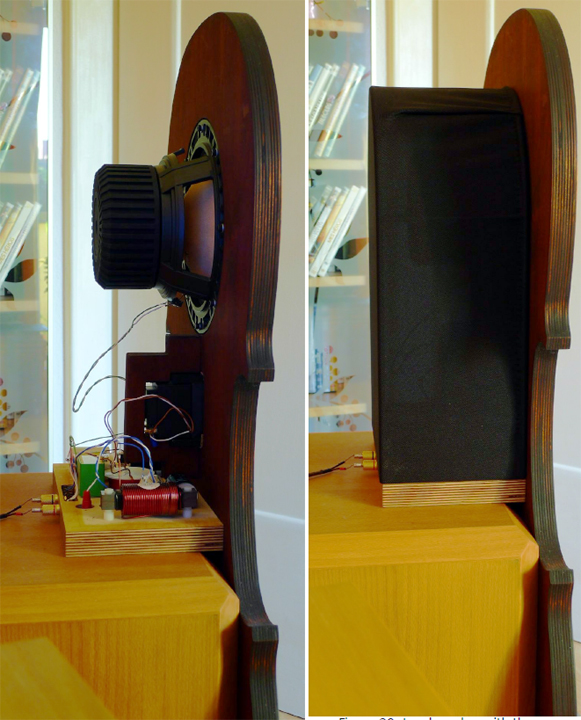|
Tip 83: The Elmar Jerichow Basszilla
Posted by Dick Olsher (October 2014)
Updated: June 2015
I’m pleased to present the latest addition to the Basszilla loudspeaker family, actually a design by Elmar Jerichow, an experienced German DIY enthusiast. It is interesting for two reasons. First of all, this is a hybrid of the Platinum Mk2 and one of the original Basszilla designs based on the Fostex FE208 Sigma twin-cone full range. Sadly, the twin cone driver has been out of production for quite a few years. I actually prefer it to the new Fostex 208E Sigma, at least when it comes to full-range applications. It’s a great sounding driver, so if you still have the old FE208 Sigma on hand, you may want to give Elmar’s design a try, but with the caveat that I have neither built nor personally evaluated it. Second, I find Elmar’s open baffle design to be breathtakingly beautiful invoking as it does the feel and majesty of a cello. It really transforms the speaker into a work of art. The whole loudspeaker was designed with the help of a CAD program and the front baffle was cut on a CNC mill. The shape of the front baffle and that of the F-holes are based on precise geometric rules and mathematical relations so as to control the proportions and baffle width for the open baffle full-range driver (see image below).
 |
The final design is the result of many months of experimentation, first using a digital crossover (Behringer DCX2496) and later testing many passive crossover and EQ networks. Listening tests were performed with the following system: Front End: HTPC with ESI Juli@ soundcard (analog output used); XBMC used as media software under Linux. Preamp: balanced volume control from Bruno Putzeys (The G-Word, Linearaudio #5). Power amplifier: balanced Pass (First Watt) F5. The final crossover network is shown below. Frequency response and impedance measurements follow.
The following are feedback and listening impressions from Elmar, excerpted from several e-mail exchanges:
I enjoy listening to the unfinished Basszillas every day and cannot believe how long I stuck to Fullrange drivers in backloaded horns. The Basszilla is just so much better. The result does please me very much. After almost 20 years of building loudspeakers I finally got a really satisfying result. These speakers are really a beautiful window to all kinds of music. Overall, the presentation is very well balanced and especially acoustical music is a pleasure to listen too. The atmosphere of the recording is very nicely reproduced. I listen a lot to unplugged albums due to the listening pleasure. The voices are sometimes really frightening. The width of the stage is bigger than the distance of the speakers. I am very much impressed of the acoustical changes, because the rest of the chain was not changed. The music was always there, it just did not make through the speakers. :-)
In the meantime I had a visitor which formerly worked for Clearaudio. I think you will know the company and there turntables quite well. It was a very big pleasure to see his jaw dropping when the music started. The speakers do really disappear completely and there is only the music right in the middle of the room. He did not really want to talk while the music was playing, but after the first CD was finished he just said: "Wow!"
He is very sensitive of the right phase of the speakers and we changed to an inverting polarity of the fullrangers. This means the bass and the tweeter are normal and the fullrange inverted. This is exactly like your MK2 crossover. The presentation is now more in front of the speakers and so much behind them.
We could not stop listening one album after another until 2 o'clock in the morning. He does own the same Fostex 208 Sigma I have and is now really thinking about building the speakers too. This was very surprising for me, because normally he is very critical and does not easily admit that something is superior to his installation.
 |
Update: June 2015
During April 2015 Elmar sent me a Mk2 version of his Basszilla design aimed at reducing long-term listening fatigue to a minimum. An overview of the changes follows.
Continue developing...
After some months living with the speakers I found the presentation actually quite colored. The voices were shouting in the face and the highs were missing. This has a nice WOW effect, but in the long run it is unpleasant to listen to and causes listening fatigue. I tried a lot with changing parts and making measurements, but this did not lead to a solution. The better way to get the crossover improved would be to start from an empty sheet again.
The Final Result: new crossover
Figure 8: Frequency responses of each driver and the combined response. A closer look at the cursor position shows, that the sum is almost 6 dB above the individual responses. This does indicate a quite perfect phase response in this frequency range.
Figure 10: Frequency responses of left and right speakers with crossover V2_MKII
Final impedance curve with new crossover:
The presentation of the speaker has change considerably due to the new crossover. The presentation is much more balanced and does give a lot of nice details. Due to the falling response shape there is no listening fatigue and I can enjoy hour after hour of music...
|